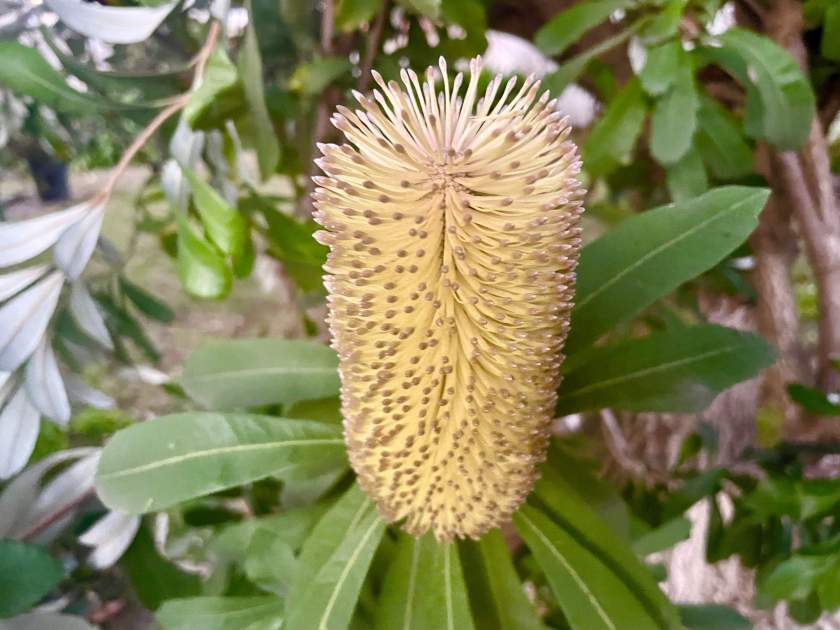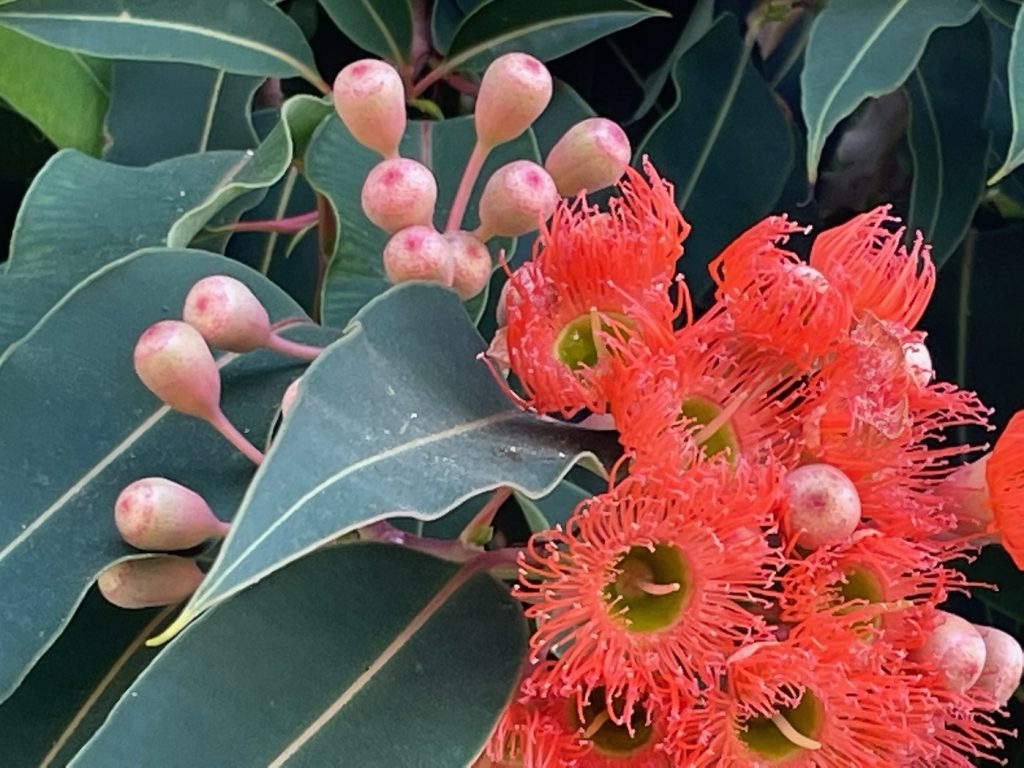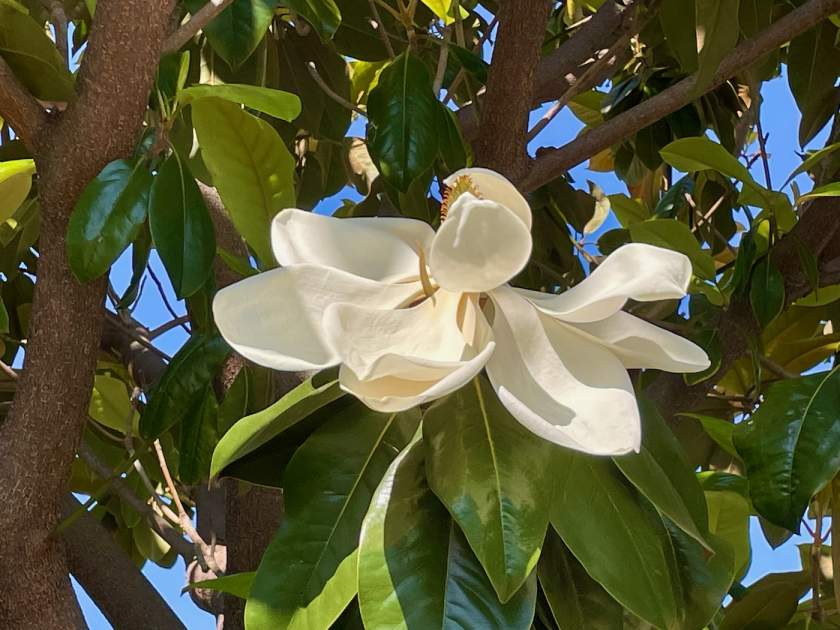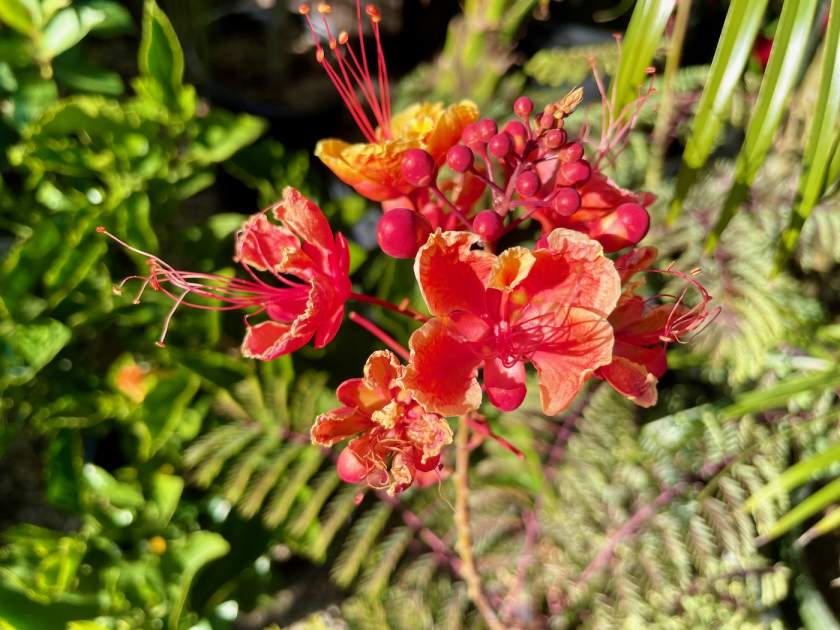Banksia integrifolia, commonly known as Coast Banksia or Coastal Banksia, is a stunning Australian native tree that belongs to the Proteaceae family. It is highly regarded for its unique foliage, attractive flower spikes, and ecological importance. Let’s delve into some details about Banksia integrifolia, including its characteristics, description, habitat, care requirements, and ecological significance.
Banksia integrifolia is an evergreen tree that can reach heights of 10 to 20 meters (30 to 65 feet) in its natural habitat, but it may grow smaller in cultivation. It has a distinctive growth habit with a dense canopy of leathery, serrated leaves. The leaves are glossy green on the upper surface and silvery-white or pale green on the underside, providing an intriguing contrast. The foliage is lance-shaped and integrally lobed, giving rise to its specific epithet, “integrifolia.”
Discovery:
The name Banksia integrifolia has an interesting origin rooted in Latin. The term “integrifolia” is derived from the words “integer,” meaning “entire,” and “folium,” meaning “leaf.” This name refers to the plant’s distinctive feature of having leaves with smooth, unbroken edges. The genus name “Banksia” pays homage to Sir Joseph Banks, a renowned British botanist who played a significant role in the exploration and collection of plant specimens, including this particular species.
The specific name “integrifolia” was first used by Carolus Linnaeus the Younger in his 1782 publication Supplementum Plantarum. Linnaeus, an influential taxonomist, described and categorized several Banksia species based on their leaf shapes, assigning names accordingly. Among them, the species with leaves exhibiting entire margins was designated “integrifolia.”
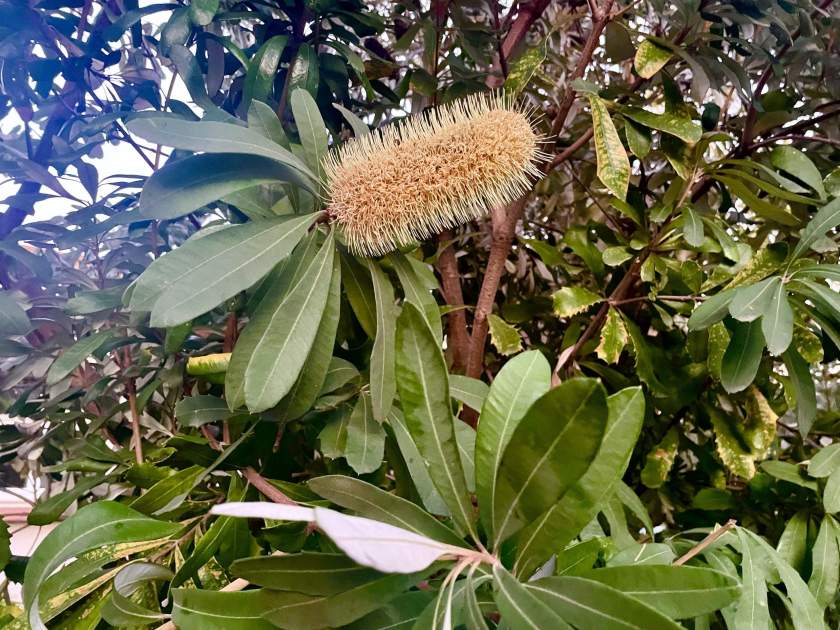
The initial botanical discovery and collection of Banksia integrifolia can be attributed to the famous naturalists Sir Joseph Banks and Dr. Daniel Solander. They embarked on the Endeavour, accompanying Lieutenant James Cook during his inaugural voyage to the Pacific Ocean. On April 29, 1770, Cook made landfall in what he later named Botany Bay, a place recognized for the abundant plant life that Banks and Solander encountered. Over the following seven weeks, the two naturalists gathered thousands of plant specimens, including those of a previously unknown genus. In honor of Banks’ contributions, this genus was later named “Banksia.”
This historical background adds an intriguing dimension to Banksia integrifolia, highlighting its connection to notable botanists and significant exploration endeavors. The legacy of those early botanical pioneers lives on through the continued appreciation and cultivation of this remarkable species.
Flowers:
One of the most striking features of Banksia integrifolia is its unique flower spikes. The cylindrical flower spikes are composed of numerous individual flowers tightly clustered together. The flower spikes emerge from the ends of branches and are generally pale yellow or creamy white in color, occasionally with hints of pale pink or red. They are highly attractive to nectar-feeding birds and insects, serving as an important food source.
Habitat and Distribution:
Coast Banksia is native to eastern Australia, particularly along the coastline from Queensland to Victoria. It thrives in coastal regions, sandy soils, and heathland environments. This species has adapted to survive in a variety of habitats, from coastal dunes and cliffs to wetlands and forests. It plays a crucial role in stabilizing sand dunes and preventing erosion, making it an important component of coastal ecosystems.
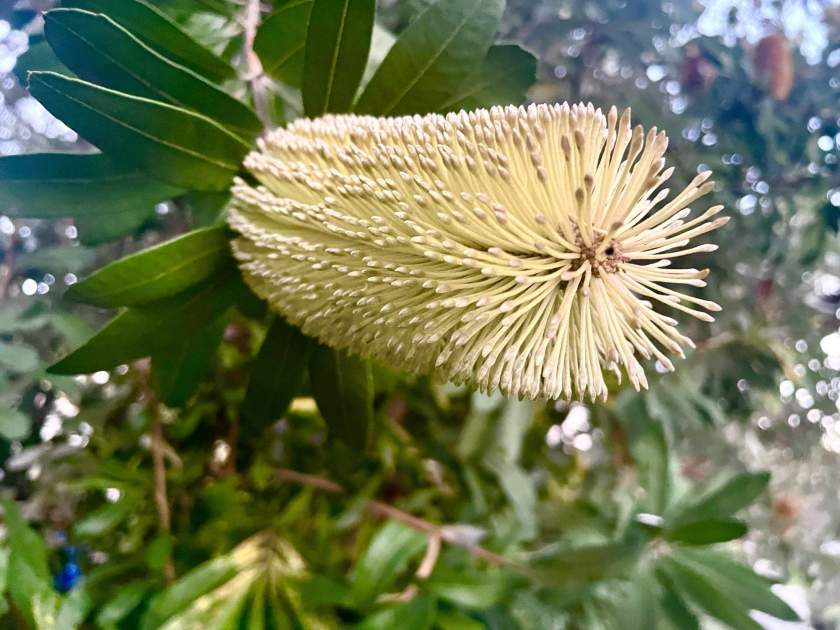
How to grow Banksia integrifolia:
If you are considering growing Banksia integrifolia, it is essential to provide the right care to ensure its success. Here are some key care guidelines:
- Light: Coast Banksia thrives in full sun to partial shade. It appreciates bright, direct sunlight but can tolerate some shade, especially during the hottest parts of the day.
- Soil and Drainage: Well-draining soils are crucial for the health of Banksia integrifolia. It prefers sandy or loamy soils but can adapt to a range of soil types. Good drainage is essential to prevent waterlogging, as this species is susceptible to root rot in overly wet conditions.
- Watering: Once established, Banksia integrifolia is reasonably drought-tolerant and can withstand dry periods. However, during the establishment phase, regular watering is necessary to ensure proper root development. Afterward, it is generally best to allow the soil to dry out partially between waterings.
- Pruning: Pruning requirements for Banksia integrifolia are minimal. Occasional light pruning can be done to maintain the desired shape or remove any dead or damaged branches. Pruning should be done after flowering to avoid interfering with future bloom development.
Ecological Significance:
Banksia integrifolia holds significant ecological importance in its native habitat. The flowers provide a vital food source for nectar-feeding birds, such as honeyeaters and lorikeets, as well as bees and other insects. The tree’s dense foliage provides shelter for various native fauna, including small birds, insects, and reptiles. Additionally, the large woody cones produced by Banksia integrifolia serve as a source of food for wildlife, as they contain numerous seeds that are dispersed by birds and small mammals.

